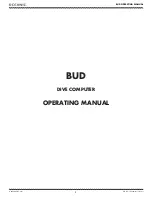
0024-9551
Revision 1
48
PCA
®
400 User Manual
IMPORTANT
:
Discard old sensors in accordance with local and federal hazardous
waste disposal laws.
IMPORTANT
:
Before performing any calibration procedures, ensure that the analyzer’s
batteries have sufficient charge or use the optional AC power adapter. Also, ensure that
the analyzer is at room temperature and is sampling fresh air when turned ON.
5.5.1 B-Smart
®
Sensors
The PCA
®
400 uses Bacharach’s B-Smart
®
Sensor technology for CO
LOW
, CO
HIGH
, NO, NO
2
and SO
2
. The B-Smart
®
Sensor is marked with a 10- or 14-digit calibration code which can
be entered via the analyzer’s interface.
Benefits of the B-Smart
®
Sensors include the following:
• New sensors can be installed without applying gas for calibration,
• Sensors can be pre-calibrated and installed when needed,
• Sensors can be moved from one analyzer to another and
• The analyzer’s diagnostics screen shows which sensors have been installed and their
current end-of-life condition
(Good or Low)
.
Sensors should be calibrated by an authorized Bacharach Service Center
(Section 7.2)
every
6-months to 1-year to ensure that the analyzer continues to meet its published accuracy
specifications. B-Smart
®
Sensors, however, can be calibrated in the field if your facility has
the necessary equipment and qualified personnel to perform the procedures described in
the following sections.
11.Calibrate Replacement Sensor
Enter the B-Smart
®
calibration code or manually calibrate the replacement sensor as
explained in Calibration
(Sections 5.5 and 5.6)
. The exception to this instruction is the O
2
sensor which does not require calibration.
5.5 B-Smart
®
Sensor Calibration
















































